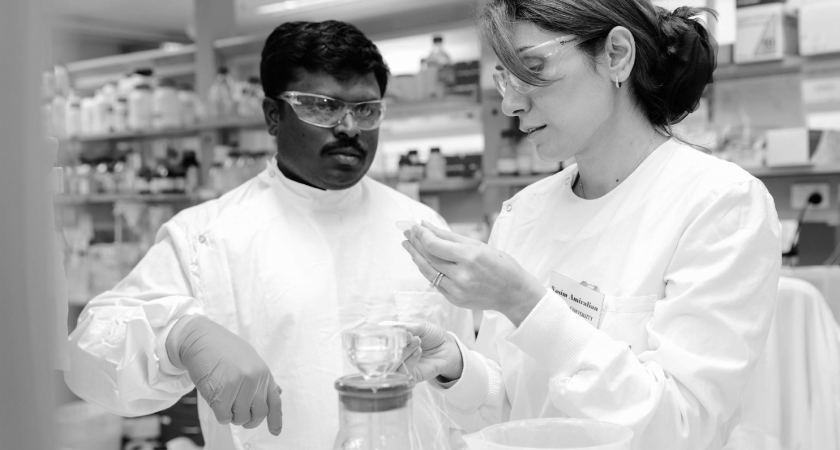
Spinifex and its ability to reinforce compounded rubber materials
In 2016, Derby Rubber collaborated with Darren Martin’s Research Group through a three-year sponsorship of Dr. Nasim Amiralian’s Advance Queensland Fellowship. Together, we have conducted three evaluations of the Spinifex CNF and its ability to reinforce compounded rubber materials.
What is Spinifex
More than a fifth of Australia’s landscape is dominated by Triodia or spinifex grasses. The 69 native species thrive in semi-arid environments and sandy, nutrient-poor soils, and rely on fire to regenerate.
This hardy plant became the subject of a 2008 ARC Discovery project, which Dr. Nasim Amiralian joined in late 2010 after coming to the University of Queensland’s Australian Institute for Bioengineering and Nanotechnology (AIBN) from Iran on a PhD scholarship.
Long used by Indigenous Australians as an adhesive for tools and in thatching roofs, Nasim started out looking at extracting spinifex sticky resin to see if it could be used as a glue or adhesive.
“Nanofibres can be extracted from any plant,” – Nasim said. “But the main difference is in the nanofibres produced from the spinifex; they’re very thin and long and flexible, and this is exactly what you need as a materials engineer.”
The fibers are “only tens of atoms wide but thousands of atoms long”, the AIBN’s Professor Darren Martin has said. This unusually high aspect ratio is “exactly what we look for when we want to reinforce flexible materials”.
How Spinifex can reinforce rubber products
The unique properties of spinifex nanofibers have potential as a super-additive in applications, including building materials, packaging, and elastomers, and are able to add strength and flexibility in tiny loadings.
An area of interest for this renewable material is rubber reinforcement, with improvements gained from additions of as little as 0.1 percent. This has potential for thinner, better gloves and condoms, as well as for rubber compounds.
Just a small amount of spinifex—less than 5%—is enough to reinforce rubber, polyurethane or another polymer – Nasim says.
Indigenous collaboration
The University of Queensland and partner Dugalunji Aboriginal Corporation have won funding to commission a nanocellulose pilot plant at the university. Under an umbrella agreement between both entities, the long-term goal is to create processing jobs for Indigenous Australians in the small town of Comooweal.
Why is important to invest in Spinifex nanofibers?
Australia is far from the only country researching the industrial usefulness of cellulose nanofibres. Nasim believes that Australia is running behind the rest of the world in this fast-growing field.
“If you look at Europe, North America, Japan, and Canada, they’re developing a lot in this area,” she said. “It’s from a natural source, it’s biodegradable, and with all these new concepts around packaging, the rest of the world is moving really fast toward using these nanofibres for different applications.”
Economical investments and collaboration between industries are critical.
Derby Rubber supports Dugalunji Aboriginal Corporation and the University of Queensland in their efforts to develop the enterprise to be able to sustainably and viably harvest spinifex and supply spinifex products for use within commercial applications.
Source:
“Grass-roots discovery” article from the University of Queensland.

